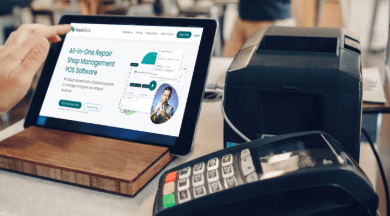The Rise of vMVPD Platforms and Their Viewer Impact

The television industry has entered a new era with the emergence of virtual Multichannel Video Programming Distributors (vMVPDs), which deliver live TV channels and on-demand content over the internet. Platforms like YouTube TV, Hulu + Live TV, and Sling TV have surged in popularity, offering a modern alternative to traditional cable and satellite services. By blending the multi-channel structure of pay TV with the flexibility of streaming, vMVPDs are reshaping how viewers consume television, influencing behavior, preferences, and expectations. This article explores the ascent of vMVPDs and their profound impact on audiences, from accessibility to personalization, in a rapidly evolving media landscape.
A Shift Toward Internet-Based TV
vMVPDs have redefined television delivery by leveraging broadband connections to provide live TV without the need for traditional infrastructure. Unlike conventional MVPDs, such as Comcast or DirecTV, which rely on cables or satellites, vMVPDs operate entirely online, streaming channels to devices like smartphones, smart TVs, and tablets. This shift has made pay TV more accessible, eliminating the need for costly hardware installations or long-term contracts.For viewers, this means instant access to live programming—news, sports, entertainment—through user-friendly apps. A subscriber to FuboTV, for instance, can watch a live soccer match on their phone during a commute or stream it on a TV at home, all with a single account. This device-agnostic approach aligns with the on-demand, mobile lifestyle of modern audiences, driving the rapid adoption of vMVPDs and transforming how television is experienced.
Empowering Viewer Choice and Flexibility
One of the most significant impacts of vMVPDs is their emphasis on viewer choice. Traditional pay TV often locks subscribers into expensive, pre-set channel bundles, many of which include unwanted content. vMVPDs, by contrast, offer customizable packages and lower price points, typically ranging from $40 to $80 per month, compared to cable subscriptions that can exceed $100. This affordability, coupled with the ability to cancel anytime, resonates with viewers seeking control over their entertainment options.For example, Sling TV allows users to select specific channel groups, such as sports or lifestyle, tailoring subscriptions to individual preferences. This flexibility appeals to cord-cutters who value live TV but reject the rigidity of traditional providers. By prioritizing choice, vMVPDs empower viewers to curate their viewing experience, fostering greater satisfaction and engagement.
Enhancing Accessibility for Diverse Audiences
vMVPDs have democratized access to live TV, particularly for audiences underserved by traditional pay TV. In regions with limited cable or satellite infrastructure, internet-based vMVPDs provide a viable alternative, delivering high-quality programming via broadband. This is especially impactful in emerging markets, where growing internet penetration enables services like YouTube TV to offer localized channel lineups at affordable prices.Moreover, vMVPDs cater to niche audiences by including specialty channels that might not be available in standard cable packages. Philo, for instance, focuses on entertainment and lifestyle networks, appealing to viewers who prioritize shows like reality TV or home improvement over sports. By broadening access to diverse content, vMVPDs ensure that viewers from various backgrounds and interests can find programming that resonates with them.
Personalization Through Advanced Features
The viewer experience on vMVPD platforms is enhanced by features that blend traditional TV functionality with streaming innovation. Cloud-based DVRs, for example, allow users to record unlimited content and access it across devices, offering greater flexibility than traditional DVRs. Hulu + Live TV’s cloud DVR lets subscribers save shows for up to nine months, catering to those who want to watch on their own schedule.Personalized recommendations, powered by algorithms, further tailor the experience. A YouTube TV user might receive suggestions for sports channels based on their viewing history, while a Hulu subscriber might see curated on-demand content from Disney’s catalog. These features create a seamless, viewer-centric experience, making vMVPDs a compelling alternative to both cable TV and standalone streaming services.
Driving Engagement with Live Content
Live programming remains a cornerstone of television, and vMVPDs excel in delivering it to digital audiences. Sports, news, and live events—such as award shows or political debates—draw significant viewership, and vMVPDs ensure these are accessible without the latency issues that can plague standalone streaming platforms. FuboTV, for instance, prioritizes sports fans with channels like ESPN and regional sports networks, offering low-latency streaming for real-time viewing.This focus on live content fosters engagement, as viewers can participate in cultural moments as they unfold. For example, a family watching the Oscars live on YouTube TV can join social media conversations in real time, enhancing the communal aspect of television. By prioritizing live programming, vMVPDs maintain the immediacy and excitement of traditional TV while adapting it for a digital audience.
Economic Benefits for Viewers and the Industry
vMVPDs offer economic advantages that resonate with cost-conscious viewers. Their lower subscription fees and lack of installation costs make them an attractive option compared to traditional MVPDs. Additionally, many vMVPDs provide ad-supported tiers, like Hulu’s lower-cost live TV plan, further reducing expenses for viewers willing to tolerate advertisements.For the media industry, vMVPDs create new revenue streams by expanding the reach of live TV to cord-cutters. Networks benefit from carriage fees, which fund high-quality programming, while vMVPDs’ lower operational costs—due to their reliance on internet infrastructure—enable competitive pricing. This balance supports a sustainable ecosystem where content creators and distributors thrive, ultimately benefiting viewers with diverse, accessible programming.
Challenges in a Competitive Market
Despite their advantages, vMVPDs face challenges in a crowded media landscape. Internet dependency means that streaming quality can vary based on broadband reliability, potentially disrupting live broadcasts. To address this, platforms invest in content delivery networks (CDNs) and partner with ISPs to optimize performance. Additionally, the proliferation of streaming services can lead to subscription overload, prompting vMVPDs to differentiate themselves through unique channel offerings or exclusive features.Competition from traditional MVPDs, which are launching their own streaming apps, and standalone platforms like Netflix adds further pressure. vMVPDs must continually innovate to retain subscribers, whether through enhanced personalization, expanded channel lineups, or integration with emerging technologies like 5G for faster streaming.
Global Expansion and Cultural Impact
The rise of vMVPDs is not confined to mature markets like the United States. Their internet-based model enables global expansion, bringing live TV to regions with growing broadband access. In countries where traditional pay TV is limited, vMVPDs can offer localized content, such as regional news or sports, at affordable prices. This global reach has the potential to reshape media consumption worldwide, introducing diverse audiences to the multi-channel TV experience.Culturally, vMVPDs are fostering a new way of engaging with television. By combining live and on-demand content, they cater to viewers who want both the immediacy of traditional TV and the flexibility of streaming. This hybrid approach encourages shared viewing experiences—such as watching live events with friends or family—while allowing individual control over content consumption, creating a dynamic and inclusive media culture.
Shaping Viewer Expectations for the Future
As vMVPDs continue to grow, they are setting new standards for what viewers expect from television. Their focus on affordability, flexibility, and personalization is pushing traditional MVPDs to adapt, with providers like Comcast offering streaming apps to compete. Meanwhile, advancements in AI and 5G promise to enhance vMVPD capabilities, from smarter content recommendations to seamless live streaming.The impact extends beyond technology to viewer behavior. By offering a tailored, accessible alternative to cable, vMVPDs are empowering audiences to demand more from their media providers—greater choice, lower costs, and seamless experiences. As these platforms evolve, they will likely drive further convergence between live TV and streaming, redefining the future of television consumption.
Redefining Television for a Digital Audience
The rise of vMVPDs marks a pivotal moment in television’s evolution, offering viewers a flexible, affordable, and engaging alternative to traditional pay TV. By delivering live channels and advanced features over the internet, these platforms are transforming how audiences access and interact with content. Their impact—on viewer choice, industry economics, and global media culture—underscores their role as a catalyst for change. As vMVPDs continue to innovate and expand, they are not only meeting the demands of today’s viewers but also shaping the expectations and possibilities of television in the digital age.





